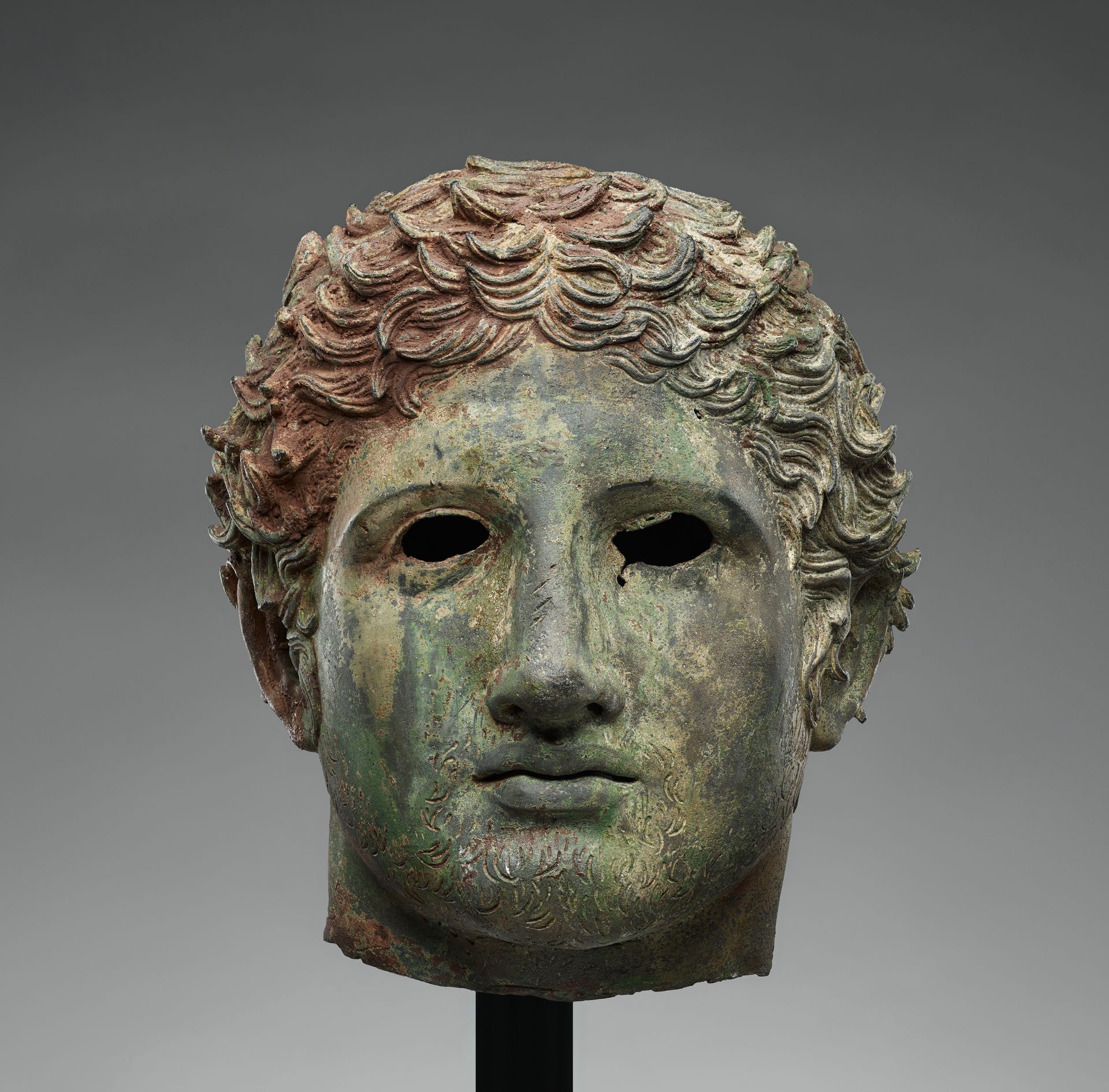Cultural Restitution
SHARE ARTICLE
A Roman bronze head from a statue of a young man, acquired by the Getty Museum in Los Angeles in 1971, is returning to Türkiye after evidence emerged it was excavated illegally.
The Museum said they agreed the object needed to be returned to Türkiye after receiving new information from Matthew Bogdanos and the Antiquities Trafficking Unit of the Manhattan District Attorney’s Office indicating the excavation of this bronze head had been illegal.
Cast separately as part of a bronze life-size figure and dating to the 1st cent BCE to the 1st cent AD, it was probably modelled by a Greek artist. This is indicated by an inscribed late-form alpha (A) visible on the interior of the neck. The style suggests either a highly idealised Roman portrait in an earlier Greek manner or a Roman copy after a Greek original. The thin casting is of especially fine quality, which also supports a date around the 1st cent AD.
The location of the body and the identity of the head remain unknown. However, the bronze has been associated with the archaeological site of Bubon, in the Burdur province of southwestern Türkiye. We know that illicit excavations took place at Bubon in the late 1960s and that several other ancient bronzes were trafficked abroad following these illegal excavations.

The bronze head was sold to the Museum in 1971 by Nicolas Koutoulakis (1910-96), a now deceased Geneva-based art dealer for the sum of $90,000. Koutoulakis has been identified with other looted artefacts, including others sold to the Getty. In 2011 the Getty arranged the return of a carved object sold to the Museum by Koutoulakis for $20,000 after investigations revealed it was part of a funerary wreath stolen from a Greek museum.
According to a post on the Chasing Aphrodite website, the bronze head now returning to Türkiye has been on a list of ten looted objects that Türkiye has been attempting to recover since at least 2012. Another striking Roman portrait Head of a Man in the Getty collection (Ref. 73.AB.8) was also acquired from Koutoulakis for $125,326 in 1973. The origin of this second head is loosely attributed to 'Asia Minor'. It's not clear whether this head may also be the subject of a repatriation appeal.
Officials have removed the head returning to Türkiye from display at the Getty Villa Museum. They have also confirmed its repatriation is in accordance with Getty’s policy to return objects when reliable information indicates they were stolen or illegally excavated.
In a press statement, Robert Tuttle Director of the Getty Museum said, “We seek to continue building a constructive relationship with the Turkish Ministry of Culture and with our archaeological, conservation, curatorial, and other scholarly colleagues working in Türkiye, with whom we share a mission to advance the preservation of ancient cultural heritage.”
The Museum has returned other major exhibits to Italy investigated by Matthew Bogdanos. In 2007 it returned the so-called ‘Getty Aphrodite’ and in 2022 it returned a nearly life-size sculptural group of a Seated Poet and two Sirens after Bogdanos discovered the figures had been excavated illegally from the Greek colony of Tarentum in southeast Italy.
Meanwhile, a decision on Thursday 02 May 2024 made by the European Court of Human Rights (ECHR) in Strasbourg has upheld Italy's right to seize the Getty's Greek bronze statue known as ‘Victorious Youth’. Purchased for $3.98 million in 1977, for decades the Museum has consistently defended its legal right to retain this iconic Greek statue, one of the greatest treasures in the Getty Museum.
Discovered by Italian fishermen in 1964, understood to be fishing at the time in international waters, the statue was sold to a group of Italian art traffickers, eventually finding its way to Great Britain where it was brought to the attention of J. Paul Getty. Italy considers the statue a vital part of its cultural heritage, but the Getty took its case to the ECHR claiming its rights were protected under European human rights protocols on property protection. In support of Italy's claim, the ECHR has ruled that country's efforts to reclaim the statue were not disproportionate and that the Getty were at best negligent in acquiring it without proper verification of its provenance,
The Getty rejects this assertion. In a statement, the Museum stated the "Getty's nearly 50-year public possession of an artwork that was neither created by an Italian artist nor found within the Italian territory is appropriate, ethical and consistent with American and international law."
Exactly what will happen next is unclear. Italy's culture minister, Gennaro Sangiuliano, said his government will contact U.S. authorities "for assistance in the implementation of the confiscation order." However, enforcement of the order is certain to be problematic, not least because the U.S.A. is not a party to the ECHR.
After this was written....
A recent analysis of the ECHR's decision describes it as 'ground-breaking, progressive and utterly surprising'. However, confusing elements in the decision means it's also 'rather problematic'. In particular, the analysis draws attention to the brushing aside of some of the more problematic aspects of the 2007 confiscation order (Source: The 'Getty Bronze' at the European Court of Human Rights by Alexander Herman, Director of the Institute of Art and Law, May 21, 2024).
Photo: Head from a Statue of a Youth, Roman, 1st cent BCE-1st cent AD
Courtesy of J. Paul Getty Museum
More News



